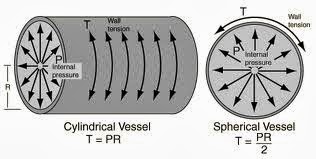Many naturally-occurring Biological Structures have the ability to extract liquid water from air. The common cactus that lives and thrives in arid locations is quite drought tolerant because it can collect liquid water droplets contained in fog.
The Opuntia Microdasys Cactus
The surface skin of this species of cactus is covered with micro- and nano-scale structures. These consist of clusters of spines and appendages (called trichomes) that are uniformly distributed all over the cactus' skin.
Study and analyses of cactus spines under an electronic microscope reveal the existence of wide and narrow grooves along the length of each spine and the existence of grooves and barbs on each trichome (figures on the left).
These specific designs are the reasons why cacti can extract water droplets from fog and do so with extreme efficiency.
Experiments in the laboratory have shown that the initial deposition of the water droplets in fog happen on the barbs on each spine and this water droplet falls down to the base of each spine while growing in size.
The trichome's job is to absorb the water arriving at the base of the spine. Thus, multiple spine clusters and trichomes working in close cooperation deliver water adequate for a cactus to thrive in very arid climates.
Two Underlying Science Phenomena
The gradient of surface-free energy and the gradient of Laplace pressure are the two mechanisms that come into play when cacti harvest water droplets from fog.
Surface-Free Energy:
This is the amount of free energy on a surface and this energy increases as the area of a surface increases.
Folds in surfaces, thus, increase surface free energy. For isotropic materials this energy is the same as surface tension.
The gradient is the direction in which surface-free energy increases: as the spine is conical in shape, the surface area closer to the bottom of the spine is greater than that closer to its tip. Thus a natural gradient exists forcing water droplets to move from the tip to the base of each spine.
Laplace Pressure
Laplace pressure is the pressure difference between the inside and the outside of a surface.
As this difference gets greater, moisture droplets outside a surface get absorbed into the body through the surface.
This is the phenomenon underlying the trichome's ability to absorb water droplets captured and delivered by the spines.
How can we replicate nature's phenomenon to capture water droplets contained in fog ingeniously everywhere on Earth? That's the task - development and deployment of artificial fog collectors - before humanity today!
The Opuntia Microdasys Cactus
 |
| Source - en.wikipedia.org/wiki/Opuntia microdasys |
 |
| Spine Clusters Source - commons.wikipedia.org |
 |
| Source - Article titled "A multi-structural and multi-functional integrated fog collection system in cactus by |
These specific designs are the reasons why cacti can extract water droplets from fog and do so with extreme efficiency.
Experiments in the laboratory have shown that the initial deposition of the water droplets in fog happen on the barbs on each spine and this water droplet falls down to the base of each spine while growing in size.
The trichome's job is to absorb the water arriving at the base of the spine. Thus, multiple spine clusters and trichomes working in close cooperation deliver water adequate for a cactus to thrive in very arid climates.
Two Underlying Science Phenomena
The gradient of surface-free energy and the gradient of Laplace pressure are the two mechanisms that come into play when cacti harvest water droplets from fog.
 |
Surface -free EnergySource - wikipedia.org |
This is the amount of free energy on a surface and this energy increases as the area of a surface increases.
Folds in surfaces, thus, increase surface free energy. For isotropic materials this energy is the same as surface tension.
The gradient is the direction in which surface-free energy increases: as the spine is conical in shape, the surface area closer to the bottom of the spine is greater than that closer to its tip. Thus a natural gradient exists forcing water droplets to move from the tip to the base of each spine.
Laplace Pressure
 |
| Laplace Pressure Source - hyperphysics. phy-astr.gsu.edu |
As this difference gets greater, moisture droplets outside a surface get absorbed into the body through the surface.
This is the phenomenon underlying the trichome's ability to absorb water droplets captured and delivered by the spines.
How can we replicate nature's phenomenon to capture water droplets contained in fog ingeniously everywhere on Earth? That's the task - development and deployment of artificial fog collectors - before humanity today!
No comments:
Post a Comment